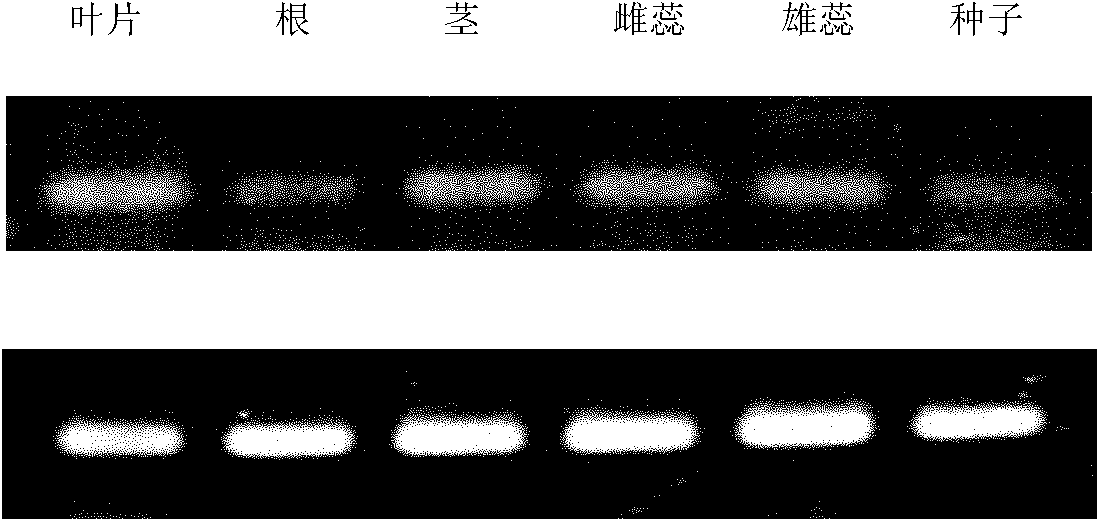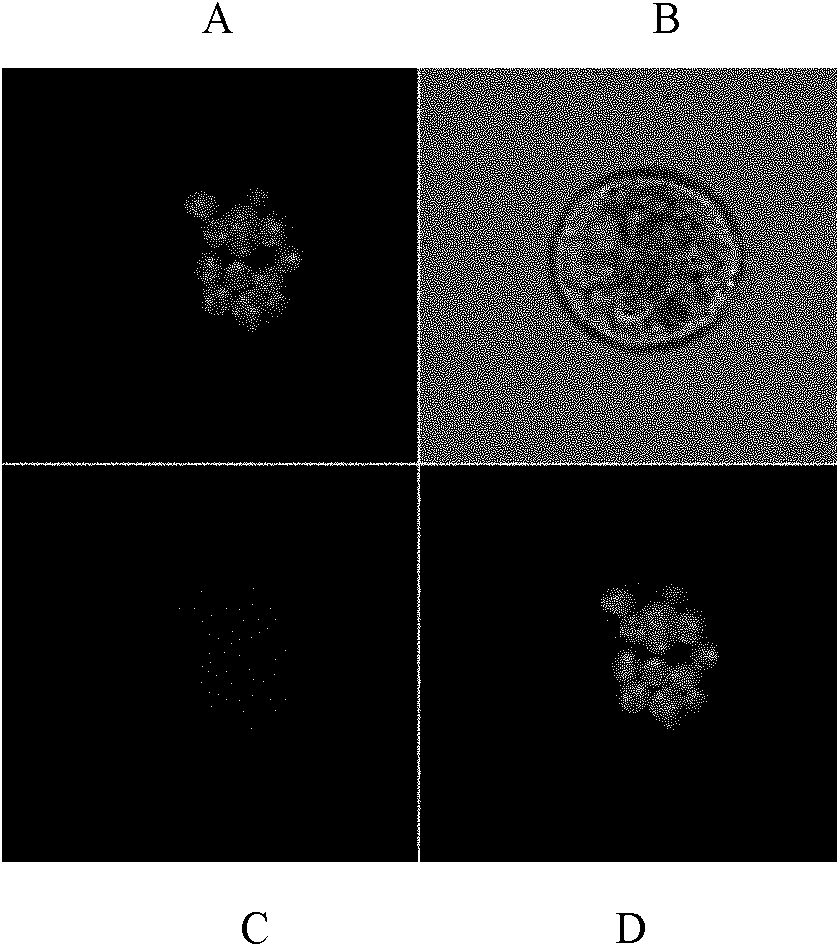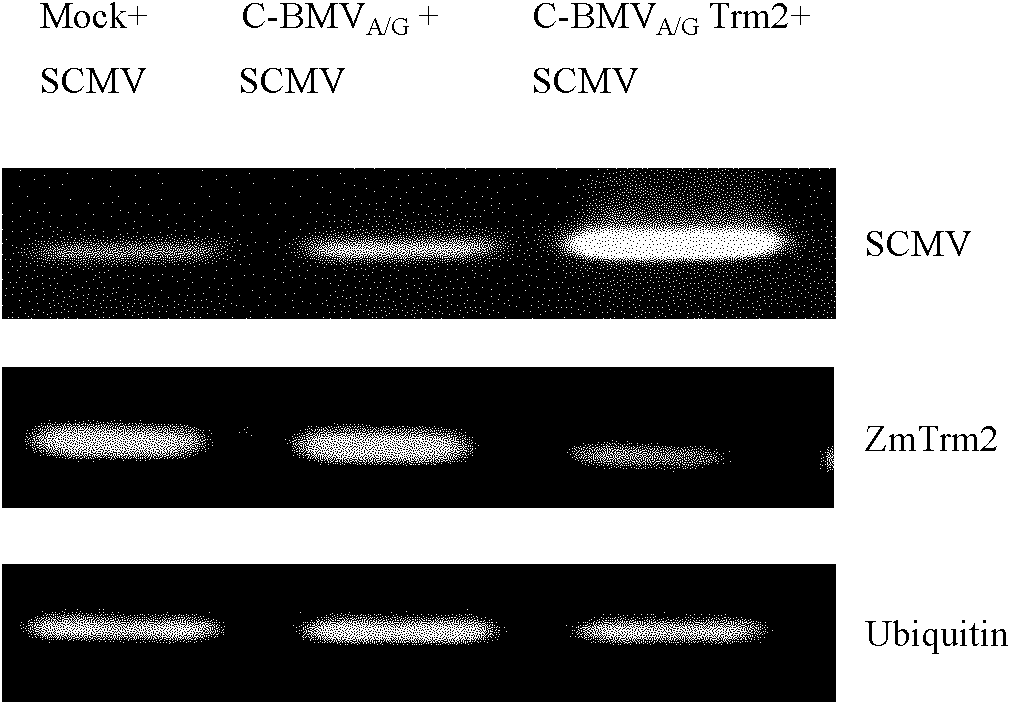Corn protein relevant to genus potyvirus virus infection and encoding gene and application thereof
A technology that encodes genes and potatoes, which can be used in applications, genetic engineering, plant genetic improvement, etc., and can solve problems such as chlorosis symptoms
- Summary
- Abstract
- Description
- Claims
- Application Information
AI Technical Summary
Problems solved by technology
Method used
Image
Examples
Embodiment 1
[0036] The acquisition of embodiment 1, ZmTrm2
[0037] 1. Construction of maize suppression subtractive hybridization library
[0038] 1. Extraction of corn total RNA
[0039] 1) Take 0.1g of fresh corn leaves, grind them into powder with liquid nitrogen, transfer to a sterilized 1.5ml centrifuge tube, then add 1ml of Tri-Reagent, shake vigorously or add 1ml of Tri-Reagent to In 1×106 protoplasts frozen at -80°C, shake vigorously for 3 minutes; place on ice for 5 minutes.
[0040] 2) The homogenate was centrifuged at 4°C and 12,000 g for 10 min in an IEC desktop refrigerated centrifuge to remove insoluble components, and the supernatant was transferred to a new 1.5 ml centrifuge tube.
[0041] 3) Let stand at room temperature for 5 minutes, add 0.2ml of chloroform, shake vigorously for 15 sec, then stand at room temperature for 2-5 minutes, and then centrifuge at 4°C and 12,000×g for 15 minutes.
[0042] 4) Transfer the upper aqueous phase to a new 1.5ml centrifuge tube, a...
Embodiment 2
[0183] Example 2, ZmTrm2 protein characterization and its application in virus prevention and treatment
[0184] 1. Localization of ZmTrm2 in maize mesophyll cells
[0185] 1. Construction of ZmTrm2 expression vector
[0186] Using the sequence 2 in the artificially synthesized sequence list as a template, primers were designed to amplify the full-length reading frame of ZmTrm2, the PCR product was digested by SalI / SacI double enzymes and a 516bp gene fragment was recovered, and the pcEmGFP-DEST vector was simultaneously digested with SalI / SacI double enzymes (purchased from Invitrogen, the product catalog number is V35520), recover the large vector fragment, and connect the recovered vector large fragment with the recovered 516bp gene fragment to obtain the target plasmid. The target plasmid was transformed into E. coli, resistance screening, positive clones were picked, and the positive clones were cultured in liquid, and the positive clone plasmids were extracted for seque...
PUM
 Login to View More
Login to View More Abstract
Description
Claims
Application Information
 Login to View More
Login to View More - R&D
- Intellectual Property
- Life Sciences
- Materials
- Tech Scout
- Unparalleled Data Quality
- Higher Quality Content
- 60% Fewer Hallucinations
Browse by: Latest US Patents, China's latest patents, Technical Efficacy Thesaurus, Application Domain, Technology Topic, Popular Technical Reports.
© 2025 PatSnap. All rights reserved.Legal|Privacy policy|Modern Slavery Act Transparency Statement|Sitemap|About US| Contact US: help@patsnap.com



